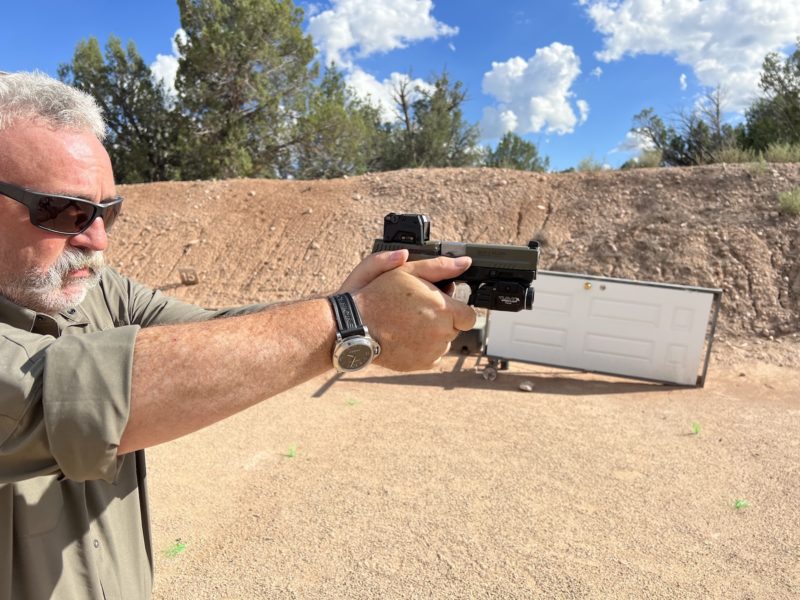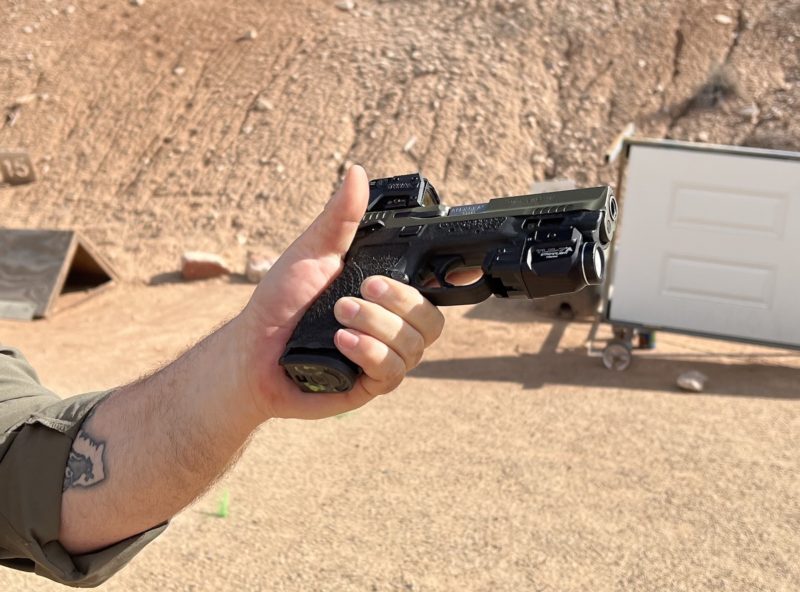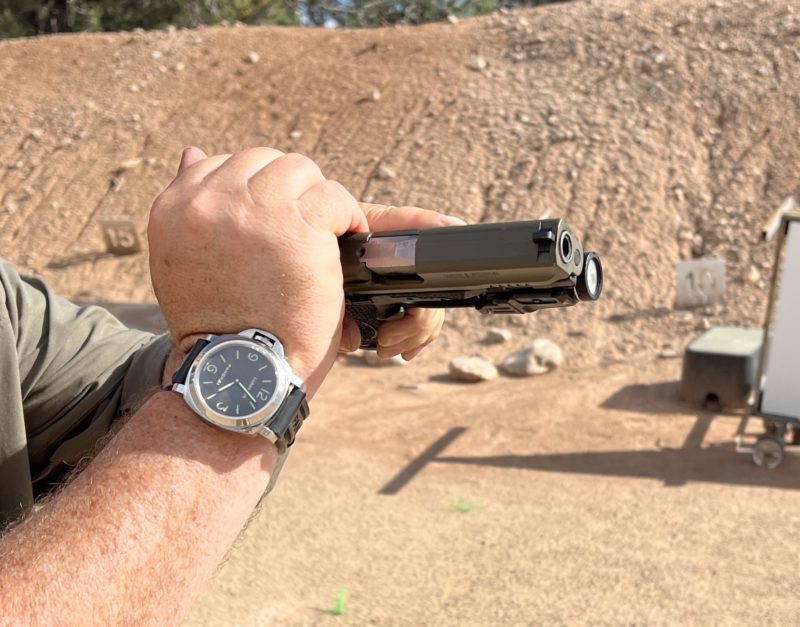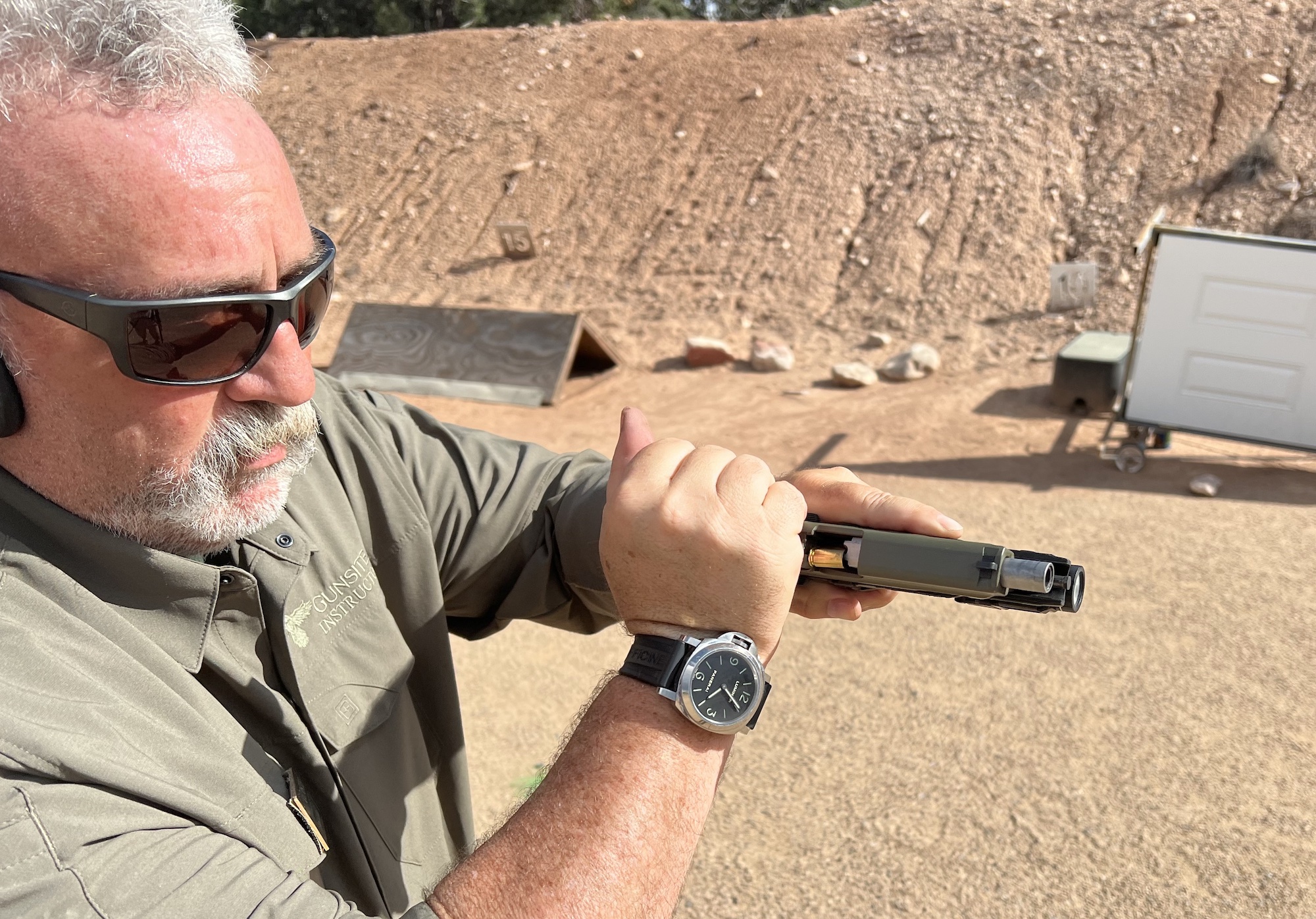
Featured_2019
Pistols, like any other manufactured and mechanical object, can fail. And they can stop working when you least want them to. Those failures will happen because the function cycle is interrupted. What’s the function cycle? Feed, Chamber, Lock, Fire, Unlock, Extract, Eject, and Cock. This cycle happens with every semi-auto and automatic firearm.
Before I started the police academy in – cough, cough – 1989, someone had identified that one method would likely clear most stoppages. Someone also determined that “we” could use that method in a non-diagnostic way. Meaning that rather than look at the pistol to determine what had gone wrong, if the firearm stopped working, we should employ that technique – initially Tap, Rack, Bang.
Yes, it was Tap the base of the magazine to ensure it was seated. Rack the slide, pulling it completely to the rear before releasing it to go forward and chamber a round. Bang meant to fire the shot.
An early change to the wording was replacing Bang with Assess.
In that era, there was a difference in how you handled a Failure to Fire and a Failure to Eject (Stove Pipe). Back then, the idea was to sweep the case out of the ejection port rather than just racking the slide. That changed too.
The next tweak to the non-diagnostic clearance was to stop sweeping the spent case and run the slide while rolling the ejection port downward.
By then, the non-diagnostic clearance had evolved to Tap/Roll-Rack/Assess.
What does that end up looking like when it happens?
You are up on target with a sight picture, pressing the trigger, and then you get a click—the second loudest sound from a firearm.
You tap the base of the magazine to ensure it is seated in the frame. That can be done with your support hand when you are shooting two-handed. Or with the side of your leg or something similar if you shoot one-handed.
Then, regardless of whether it is a failure to fire or a failure to eject, you grab the back of the slide with an overhand grip. As you get that grip, you roll the ejection port down towards the ground – which is outboard for right-handers and left-handers.
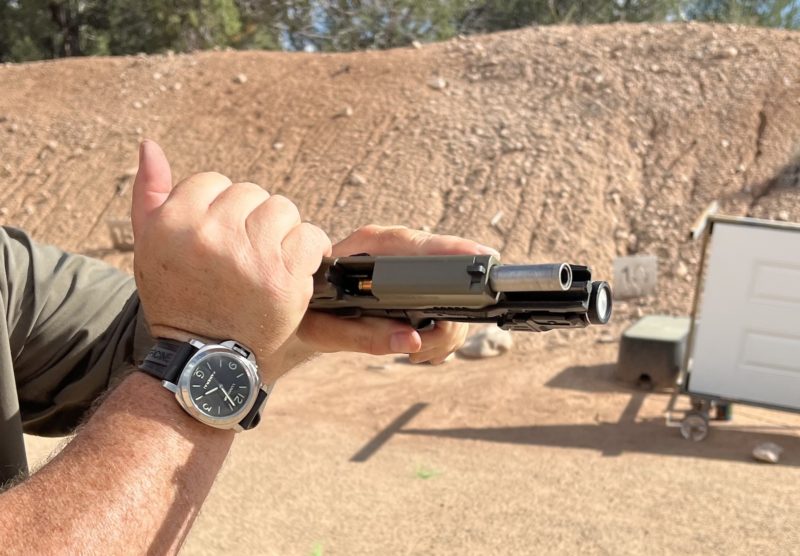
Rack the slide by pulling it all the way to the rear. Then let it slam forward to chamber another round.
As that’s happening, you will pull the slide (or Rack it) all the way to the rear before releasing it to slam forward.
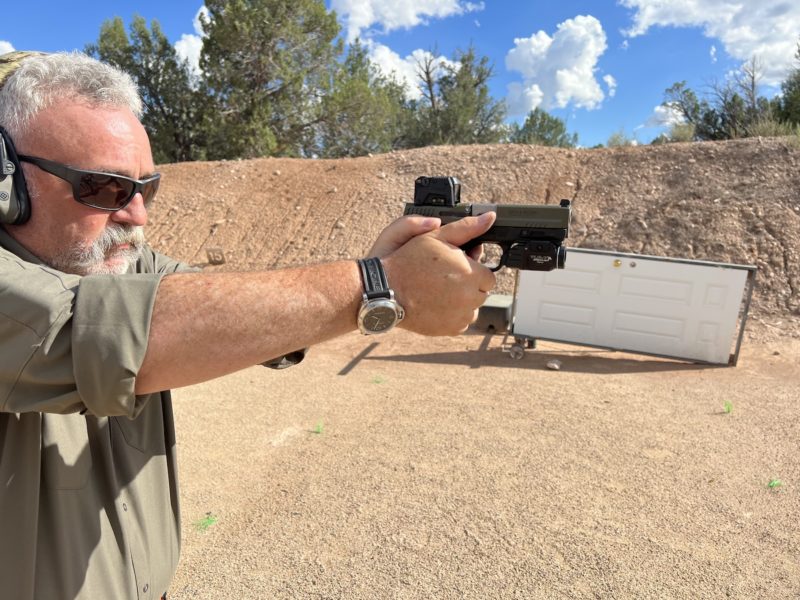
Assess, is there still a threat requiring deadly force? If so, reacquire your sight picture and finish the fight.
Assess? Yes. Visually re-acquire the threat, the BadGuy, whatever had caused you to be shooting in the first place, and determine if they are still a threat. That might sound odd, but it has been talked about long enough in the training community that it should be part of the process. How long is that going to take? Good question. If the BadGuy is doing anything other than surrendering, likely, the standard for deadly force is still met.
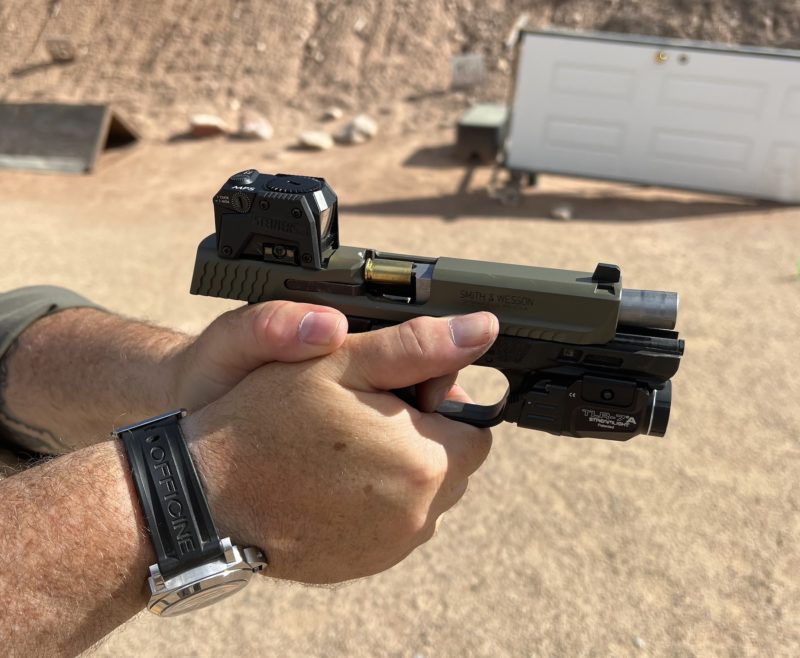
What about when it is a Failure to Eject, also known as a Stovepipe? It is Tap, Roll & Rack, Assess.
There are two areas of discussion that I should address.
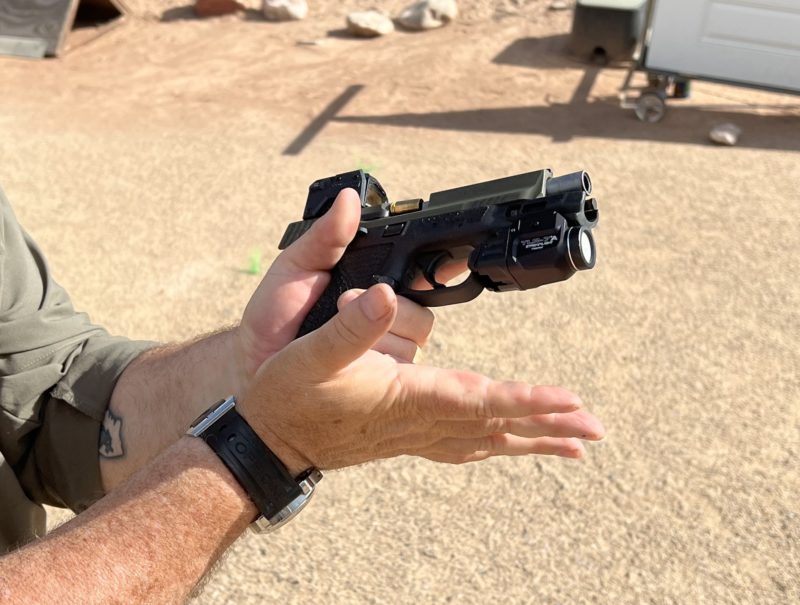
Ensure the magazine is seated at the start of the process. If not, you’ll repeat steps and time becomes an issue.
There are instructors I know who teach you do not need to tap the base of the magazine. I have had students ask about this. Well, I beg to differ. I have seen magazines come unseated yet remain in the magazine well. With those, the first shot will fire, but the firearm won’t feed and chamber the next round because it would be too low. I have experienced this with duty holsters. And I have seen it happen to decent, normal humans who carry concealed – in training and when out & about.
That is why I continue to advocate for the Tap.
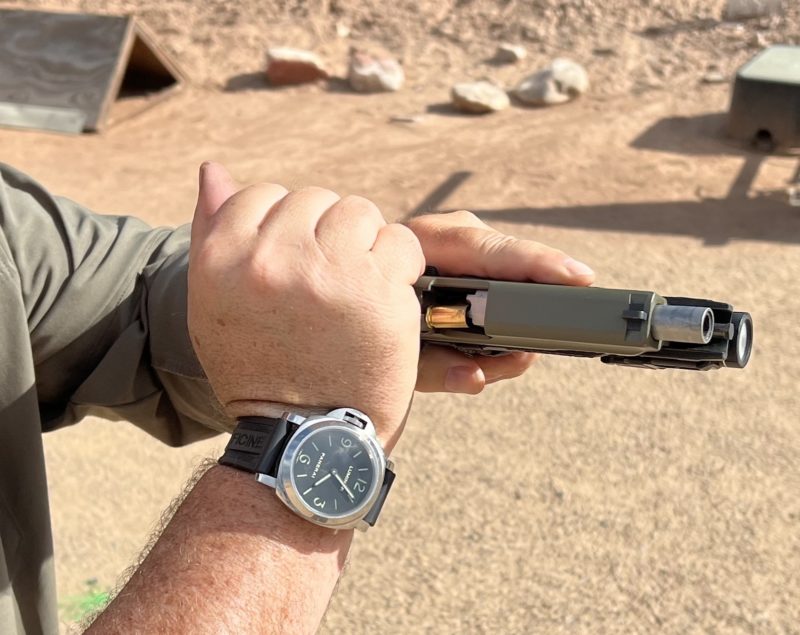
Rolling the ejection port down brings gravity into play, helping get rid of anything in the ejection port.
Ejection port up or down? Rolling the ejection port down allows gravity to affect any spent cases or other junk that might be in the ejection port. An overhand grip aids this. Some trainers have expressed that your thumb and forefinger have sufficient strength to grip and rack the slide to the rear. That thumb and forefinger grip is best done with the slide rolled towards the center of your body. Friends and I have had difficulty switching to this method because of the number of repetitions we have racking the slide the other way. Yet this method does work should you choose to use it.
Part two will cover Failure to Extract stoppages, also known as the Double Feed, and two different ways to clear them. Until then, add some malfunction clearances to your training regimen.

